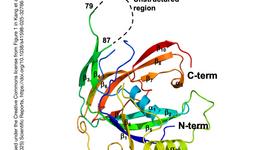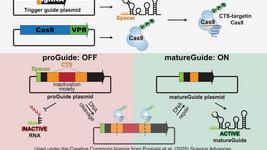Base editors reshape pathogenic repeats
Trinucleotide repeat (TNR) diseases are neurological disorders caused by expanded genomic TNRs that become unstable in a length-dependent manner. The CAG•CTG sequence is found in approximately one-third of pathogenic TNR loci, including the HTT gene causing Huntington's disease, whilst Friedreich's ataxia results from GAA repeat expansion at the FXN gene.
The study used cytosine and adenine base editing to reduce TNR repetitiveness in patient cells and mice. Base editors introduced G•C>A•T and A•T>G•C interruptions at CAG and GAA repeats, mimicking stable, nonpathogenic alleles that naturally occur in people. AAV9 delivery of optimised base editors in Htt.Q111 Huntington's disease and YG8s Friedreich's ataxia mice resulted in efficient editing in transduced tissues and significantly reduced repeat expansion in the central nervous system.
For Huntington's disease, cytosine base editing achieved 66–82% repeat interruption in patient fibroblasts and prevented somatic repeat expansion over 30 days. Treatment reduced average CAG repeat length by 1.6–5.4 repeats in mouse brain regions. For Friedreich's ataxia, adenine base editing achieved 20–33% editing efficiency in patient cells, increasing FXN transcript levels by approximately 1.5-fold. In mouse models, treatment significantly reduced GAA repeat size by 4.9–7.2 repeats in cortical tissue.
Co-first authors of the study were Zaneta Matuszek and Mandana Arbab at the Broad Institute of Harvard and MIT, and it was led by Ricardo Mouro Pinto and David Liu colleagues from the Broad Institute of Harvard and MIT and Massachusetts General Hospital, respectively. It was published in Nature Genetics on 26 May 2025.
To get more CRISPR Medicine News delivered to your inbox, sign up to the free weekly CMN Newsletter here.
Tags
ArticleCMN BriefsNewsFriedreich’s ataxiaHuntington's diseaseBase editors
CLINICAL TRIALS
Sponsors:
Base Therapeutics (Shanghai) Co., Ltd.
Sponsors:
Base Therapeutics (Shanghai) Co., Ltd.







